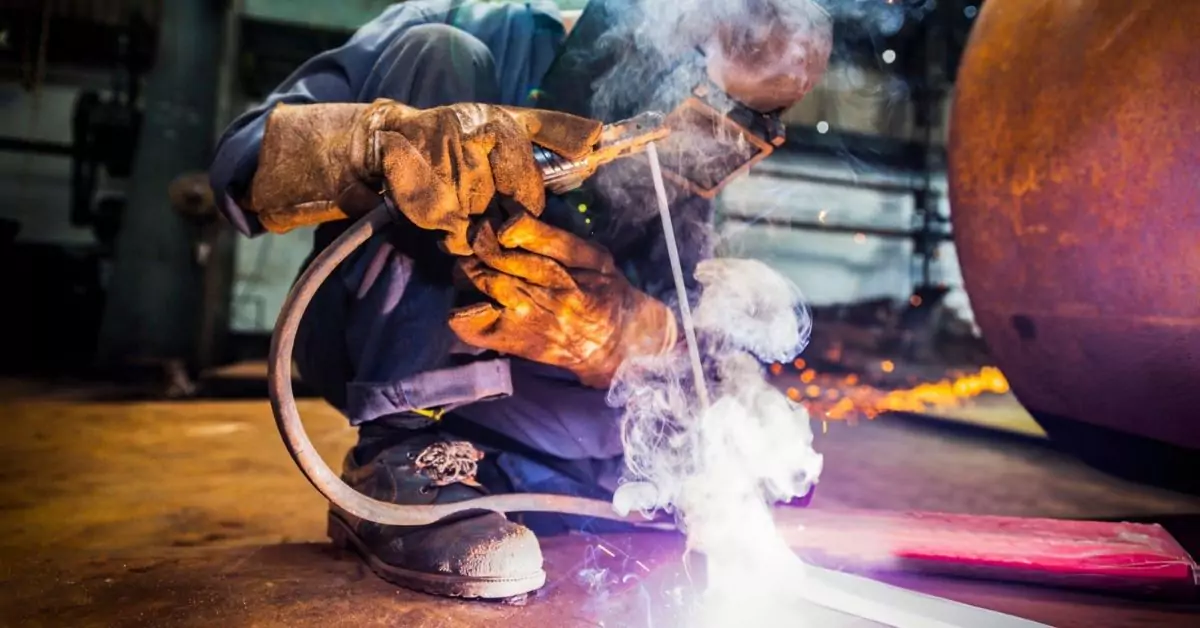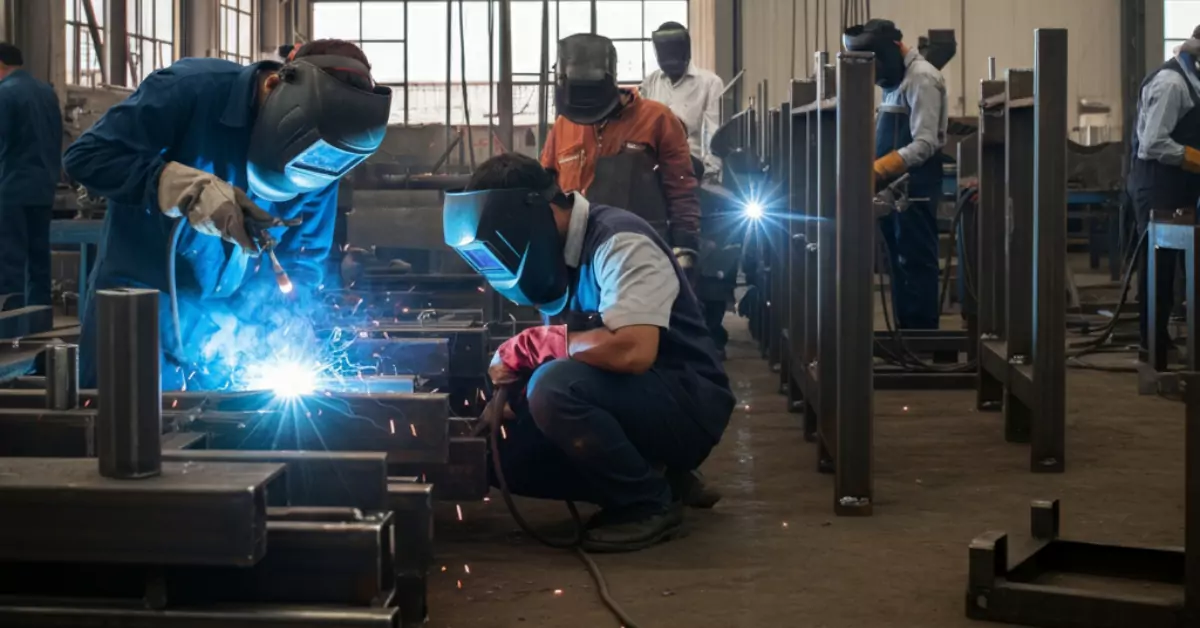What Is Called Welding? A Beginner’s Guide to the Craft
Welding is more than just sparks flying and molten metal; it’s the art and science of joining two materials–typically metals or thermoplastics–to create something solid, functional, and capable of withstanding the test of time. Whether it’s constructing towering skyscrapers, crafting intricate sculptures, or ensuring the durability of machinery, welding plays an essential role in nearly every modern industry.
If you’re a beginner welder, a welding student, or simply a metalworking enthusiast, this guide will walk you through the basics of welding, the common methods used, essential tools, and safety practices. You’ll not only understand what welding is but also gain insights that can help you get started with this versatile skill.
What Are the Different Types of Welding?
Welding is not a one-size-fits-all process. Depending on the materials being joined, the project requirements, and the environment, welders use various methods. Here are the most common types of welding:
1. MIG Welding (Gas Metal Arc Welding)
MIG (Metal Inert Gas) welding, also known as Gas Metal Arc Welding (GMAW), is one of the easiest and most popular welding methods for beginners. It uses a wire electrode fed through a welding gun, which melts and joins materials as an inert gas like argon protects the weld from contamination.
- Advantages: Easy to learn, high welding speed, and works on thin to medium-thick metals.
- Applications: Automotive repairs, DIY projects, and light metal fabrication.
2. TIG Welding (Gas Tungsten Arc Welding)
TIG (Tungsten Inert Gas) welding, or Gas Tungsten Arc Welding (GTAW), is a more precise technique that uses a non-consumable tungsten electrode and often requires the operator to feed a filler material by hand. It’s ideal for detailed and high-quality welding solutions.
- Advantages: Produces clean and precise welds, works on a wide range of metals including aluminum and stainless steel.
- Applications: Aerospace, automotive, and artistic metalworking projects.
3. Stick Welding (Shielded Metal Arc Welding)
Stick welding, or Shielded Metal Arc Welding (SMAW), is one of the oldest and most versatile types of welding. It uses a consumable electrode coated with flux to create the weld. The flux forms a protective gas and slag layer to keep impurities out.
- Advantages: Works well outdoors and on dirty or rusty metals, inexpensive equipment.
- Applications: Construction, pipelines, and heavy repairs.
What Are the 4 Types of Welding?
These commonly discussed methods–MIG, TIG, Stick, and Flux-Cored Arc Welding (FCAW)–are the core welding types used for most applications, each offering unique benefits and challenges.
Welding Applications Across Industries
Welding is a foundational trade for many industries, enabling the construction of infrastructure, machines, and everyday products. Here are a few industries where welding is critical:
- Construction: Bridges, buildings, and skyscrapers owe their strength to skilled welders.
- Automotive: From car frames to exhaust systems, welding is critical in vehicle production and repairs.
- Aerospace: High-quality TIG welds are crucial for assembling aircraft with precision.
- Manufacturing: Welders keep factories running by creating and repairing industrial equipment.
- Art and Design: Intricate sculptures and metal artworks depend on welding mastery.
Essential Welding Equipment for Beginners
Starting your welding journey? Here’s what you’ll need to get started:
- Welding Machine: Choose a machine compatible with the welding type you want to learn (e.g., MIG, TIG, Stick).
- Electrodes and Filler Materials: Depending on the work and material type.
- Protective Gear:
-
- Welding Helmet with Auto-Darkening Lens
- Fire-Resistant Gloves
- Flame-Resistant Clothing or Apron
- Welding Tools:
-
- Wire Brush or Grinder (to clean work surfaces)
- Clamps (to hold materials in place)
- Chipping Hammer (to remove slag)
At E S HAJI & CO., we prioritize precision, safety, and quality in everything we do. From tools to welding services, we’ve got you covered.
Basic Welding Techniques
Here are some foundational techniques every new welder should practice:
- Butt Joint: Joining two flat metal pieces edge to edge.
- T Joint: Joining one piece perpendicular to the other to form a “T” shape.
- Lap Joint: Overlapping two pieces of metal and welding them together.
- Fillet Weld: A triangular weld that joins surfaces at a right angle.
Start practicing on scrap metal to perfect your control and consistency. Remember, welding is as much an art as it is a trade!
The Importance of Safety
Safety is non-negotiable in welding. A few key safety measures include:
- Always wear a welding helmet with proper eye protection to shield against harmful UV radiation.
- Ensure proper ventilation to avoid inhaling toxic fumes.
- Keep flammable materials far from the welding area.
- Regularly inspect your equipment for damage or wear.
By taking these precautions, you can enjoy a rewarding and safe welding experience.
Resources for Beginner Welders
Learning never stops, especially for welders. Here are some recommended resources for beginners:
- Courses:
-
- Local trade schools and community colleges often offer beginner welding classes.
- Online platforms like Udemy and Coursera have welding courses tailored for different skill levels.
- Books:
-
- Welding For Dummies by Steven Robert Farnsworth
- Modern Welding by Althouse, Turnquist, and Bowditch
- Tools:
-
- Download free welding guides in PDF format from reputable websites.
- Check out welding simulation apps for hands-on virtual practice.
Start Your Welding Journey Today
Welding is a highly rewarding skill that opens up countless possibilities, from building a custom metal desk for your home office to joining the ranks of skilled professionals who help build our infrastructure. Whether you’re interested in learning about advanced welding positions or exploring a lucrative welding salary, this trade offers endless potential.
At E S HAJI & CO., we’re passionate about welding and are here to support your journey. Whether you’re searching for “welding near me,” looking to buy a reliable welding machine, or just curious about the welding process, we’ve got you covered.
Explore our range of high-quality welding equipment or reach out to our team of experts for guidance. Precision, strength, and quality–that’s our promise.
Take the first step today. The sparks are waiting!



